Shared knowledge, stronger conservation
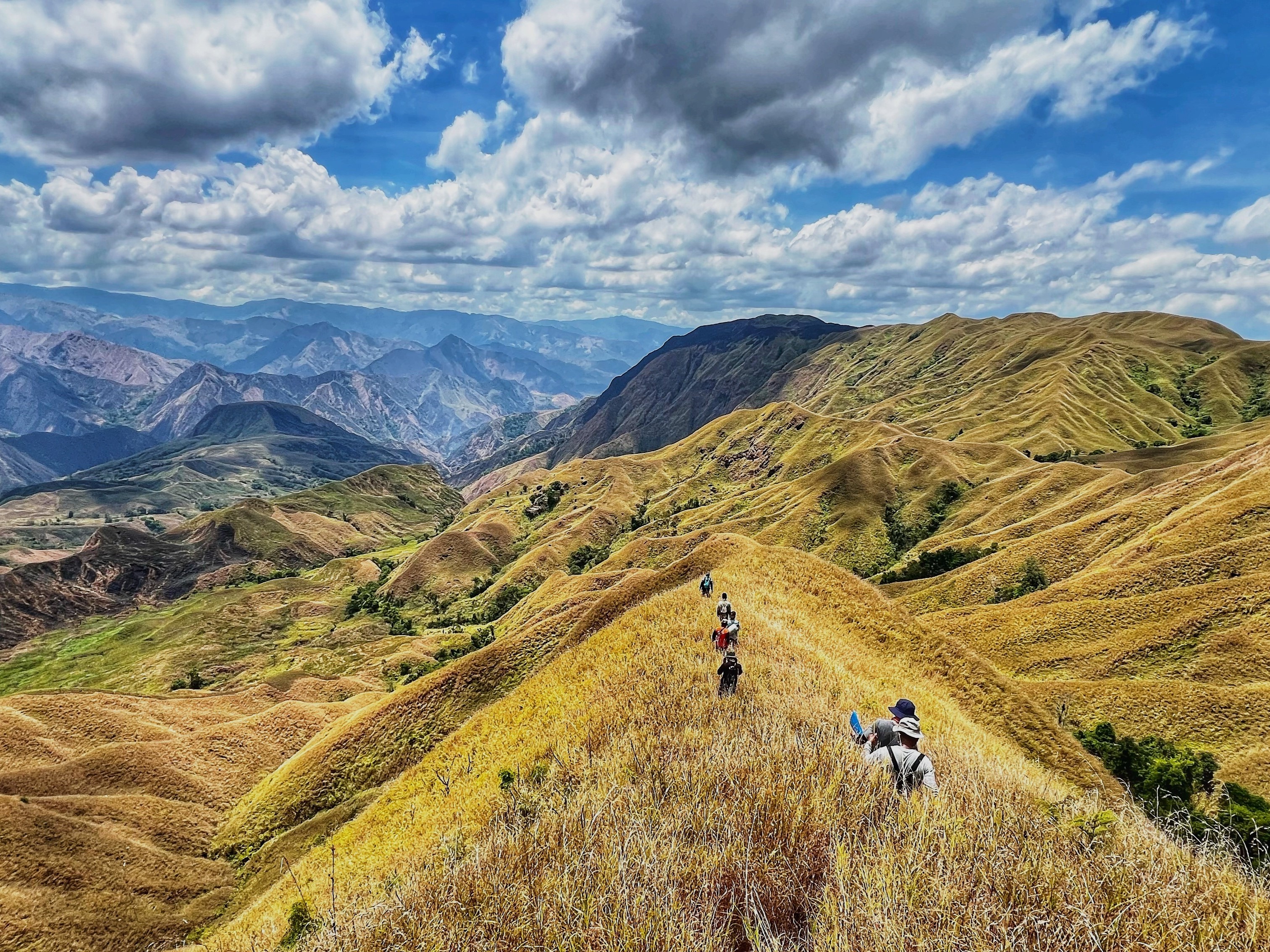
Team composed of staff from project partners, with the French Masteral student, conducting the dung transect survey at Mounts Iglit-Baco Natural Park (MIBNP) in April 2025 with simplified protocol. Credit - D’ABOVILLE Foundation and Demo Farm Inc. (DAF).
Establishing indicators of ecological change to monitor the tamaraw in Mindoro, Philippines
Introduction
The Tamaraw (Bubalus mindorensis) is a Critically Endangered buffalo endemic to Mindoro Island in the Philippines. The largest population is found in Mounts Iglit-Baco Natural Park (MIBNP), where the species has been monitored during each dry season since 2000, using visual counting from vantage points in the park. Effective species monitoring is crucial to inform conservation decisions, and needs to follow national laws and modern conservation practice.
A call to reconsider the current practice
Despite providing valuable data, the annual tamaraw count has been criticised because it involves extensive grassland burning. Although increasing visibility of tamaraw, this practice is causing behavioural bias, harming other wildlife, hindering vegetation regeneration, and accelerating erosion. It also promotes invasive species such as the Siam weed Chromolaena odorata.
A multi-stakeholder Tamaraw Population and Habitat Viability Assessment workshop in 2018 recommended the phasing-out of fire. Yet, ending grassland burning makes tamaraw less visible, thus making the current method ineffective. Therefore, it was necessary to develop alternative monitoring methods. Both needs are now included in the Protected Area Management Plan for MIBNP and the Tamaraw Conservation and Management Action Plan.
From 2024 to 2029, the ‘Thriving together: lasting solutions for collaborative management of tamaraw landscapes’ project is supporting Indigenous landowners, other local stakeholders, and authorities in their mission to preserve the tamaraw and its habitats. It’s a joint effort of the consortium between Re:wild, the D’ABOVILLE Foundation and Demo Farm Inc. and the Mindoro Biodiversity Conservation Foundation, to enhance cooperation to implement the Tamaraw Conservation and Management Action Plan, leveraging previous achievements and on-going work.
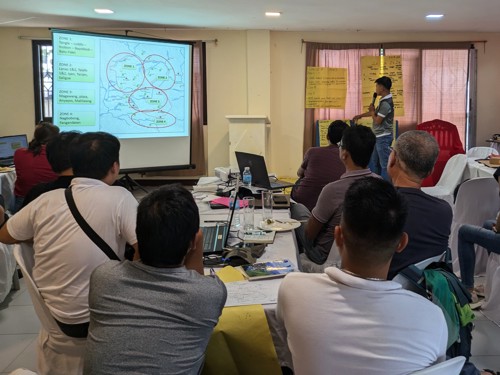
Shifting to a more integrated monitoring method
The project will foster the establishment of Indicators of Ecological Change (IEC) as a new approach to monitor the tamaraw population in MIBNP. Crafted in collaboration with its international scientific partner from the University of Lyon in France, the proposed IEC system relies on wildlife monitoring techniques developed in Europe and North America for large mammals. It aims to estimate three interrelated biological indices (quantitative measures used to assess the health or quality of an ecosystem): population abundance, reproductive performance, and impact on vegetation.
For population abundance, dung transects (surveys which follow a defined path or line in a habitat) were chosen as it uses indirect signs of presence and works year-round across all habitat types, eliminating the need for harmful grassland burning. It builds on several years of trials carried out by D’ABOVILLE Foundation and Demo Farm Inc. through a previous Darwin Initiative grant, in collaboration with the rangers and technical staff under the Philippine Department of Environment and Natural Resources. Through the ‘Thriving Together’ project, the method and field protocol based on dung sampling and double observer counting were thoroughly evaluated and analysed leading to a simplified protocol, which was successfully tested in April 2025. This index will return an absolute density of dung within the count zone that can be translated into a relative number of tamaraw, by calculating a conversion factor using the results of the double-observer point counts.
For reproductive success, the calf-to-cow ratio index will be tested in the coming year using two methods: direct sightings from selected vantage points and camera traps placed in strategic observer-hidden locations. Both aim to count females with calves. After the trial, the overall method will be refined and expanded over the entire count zone.
Finally, the impact on vegetation index will measure tamaraw pressure on its habitat, informing whether there is stress in terms of resources. For this purpose, several tamaraw-proof fenced enclosures will be installed in various locations within the count zone, and vegetation height will be monitored.
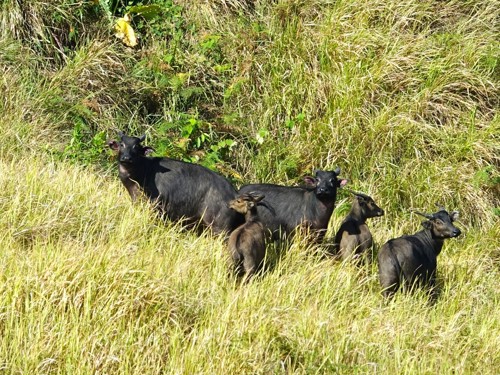
Government approval and commitment
As a result of the efforts of the consortium, the Department of Environment and Natural Resources (DENR) has officially endorsed the transition to the IEC system in November 2024. This shift will be implemented alongside other key actions supported by the project: formulation and implementation of a habitat restoration plan for the count zone, expansion of the tamaraw safe reproduction zone in collaboration with the residing Taobuid Indigenous communities, and strengthening on-site protection and ranger capacities. DENR pledged to provide necessary resources and local ordinances for successful implementation.
Building local capacity
While rangers have been trained in dung transect protocols after years of trials, local offices struggle with statistical analysis and interpretation of the results. The DENR has therefore sought the support of the consortium to fully train local staff in running the IEC system.
Under the supervision of its scientific partner, this project is currently supporting the internship of a French Masteral student to undertake this local capacitation. After participating in the transect operation in April 2025 and analysing the data collected, a tailored training programme was crafted. A five-day module in July 2025 trained ten technical staff from DENR, local researchers, and young staff of the project consortium, to perform statistical analyses of tamaraw dung transect surveys. Follow-up modules will be held in September and October 2025.
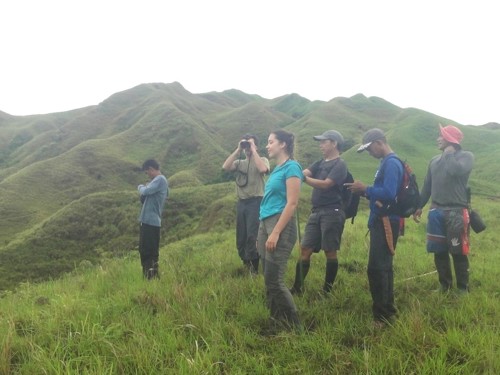
Establishing the full IEC system by harnessing local knowledge
More work is needed to build local capacity and complete the transition. An elicitation workshop will be held to define clear criteria in distinguishing calves from other age classes, prior to launching the calf to cow ratio trial. This workshop will leverage the skills and experience of rangers and Taobuid Indigenous people to substantiate the biological approach.
The vegetation impact monitoring system will be installed after the next grassland burn. Project staff and park rangers will collaborate on data collection and interpretation.
Conclusion – strength in cooperation
The IEC approach to monitoring Tamaraw shall inform local authorities both on the trend in tamaraw abundance, and on the health of the tamaraw population, through affordable and non-invasive practices.
The progressive establishment of the IEC system showcases how this project fosters collaborations between NGOs, universities, local authorities, and Indigenous communities, while harnessing and securing achievements from previous work. This partnership facilitates a transition to new conservation practices that will protect tamaraw and support better habitat management and wider biodiversity conservation.
A three-year transition period is foreseen to fully adapt the new monitoring system, ensuring parallel progress on other key conservation priorities as set in the Tamaraw Conservation and Management Action Plan while furthering local capacity enhancement.
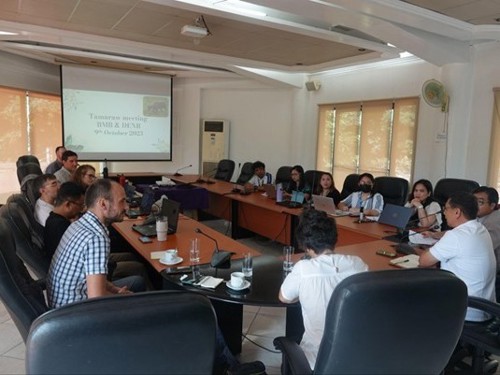
Written by Emmanuel Schütz, Ronet Santos, Kamille Poblete, Kyle Cielo, Fernando Garcia Gil, and Tobias Garstecki. For more information on this Darwin Initiative Extra project DAREX010, led by Re:wild, please click here.
 Back
Back